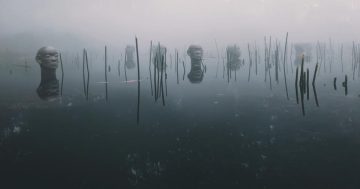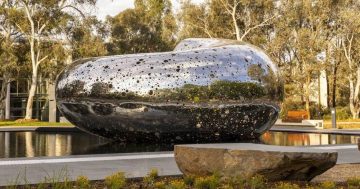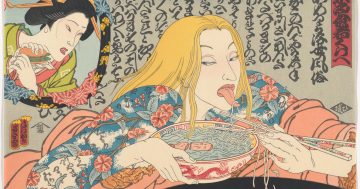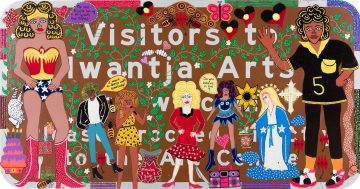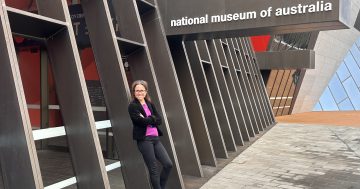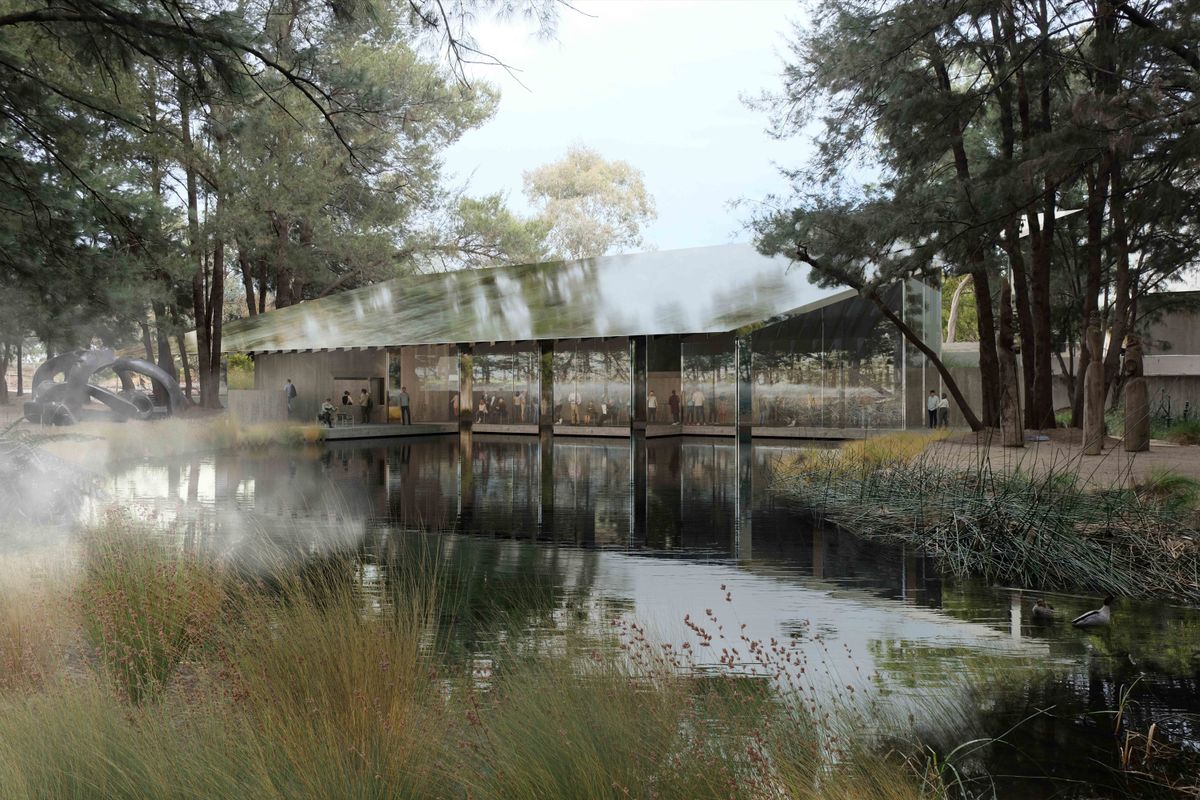
An artist’s impression of the new pavilion in a re-imagined National Sculpture Garden. Image: Choirender.
The winning design for a reimagined Sculpture Garden at the National Gallery of Australia aims to reconnect the gallery with the surrounding landscape, make the overall site more accessible, and more than double the space for art and cultural experiences.
The NGA has named the draft design multi-disciplinary team CO-AP Holdings – comprising CO-AP, Studio JEF, TARN and Plus Minus Design – as the winner of the National Sculpture Garden Design Competition.
The NGA launched the design competition in April as part of a $60 million revitalisation of the garden, which had fallen into decline.
A key feature of the winning design is a permanent stainless-steel and glass pavilion that creates a new space for exhibitions, events and education programs. It will replace the existing marquee.
The design shows seven distinct and interconnected gardens that weave their way around the gallery in a continuous circuit.
They showcase Australia’s rich biodiversity, transforming the current summer, winter and spring gardens into eucalypt forests, a fern gully, casuarina groves and grassy woodlands.
A new promenade and multi-use campus square at the National Gallery forecourt will create a welcoming space for visitors and new display opportunities for artworks.
A core goal is embedding First Nations’ principles and perspectives into the ongoing development of the design, and continued care of the garden, ensuring stewardship and connections to Country.
The NGA said the winning team was selected for their vision of the National Sculpture Garden based on respect, care and future ambition for the iconic three-hectare site.
The National Gallery and the CO-AP Holdings team would work together on its revitalisation to create a living gallery for the 21st century, it said.
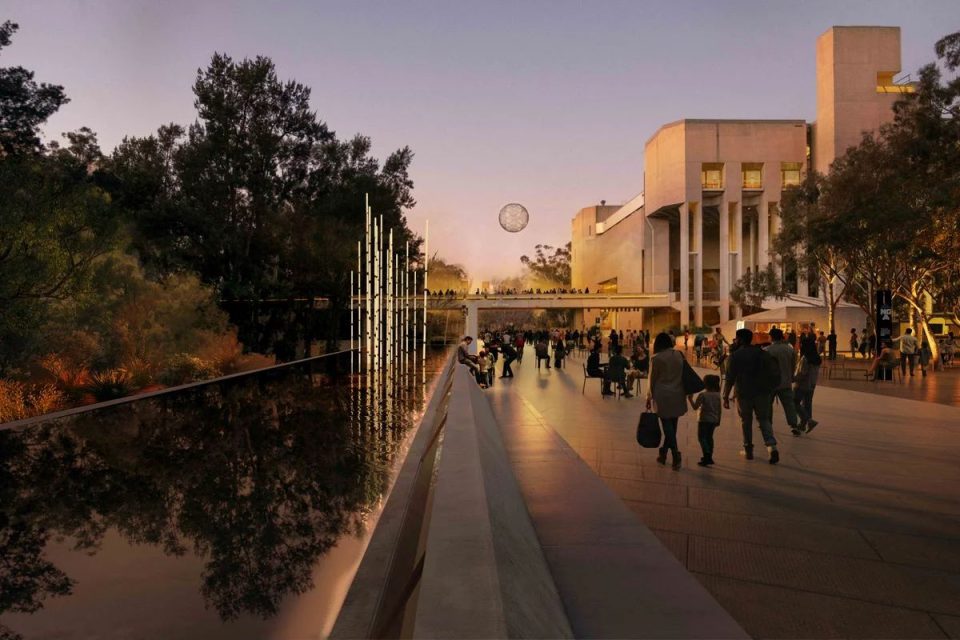
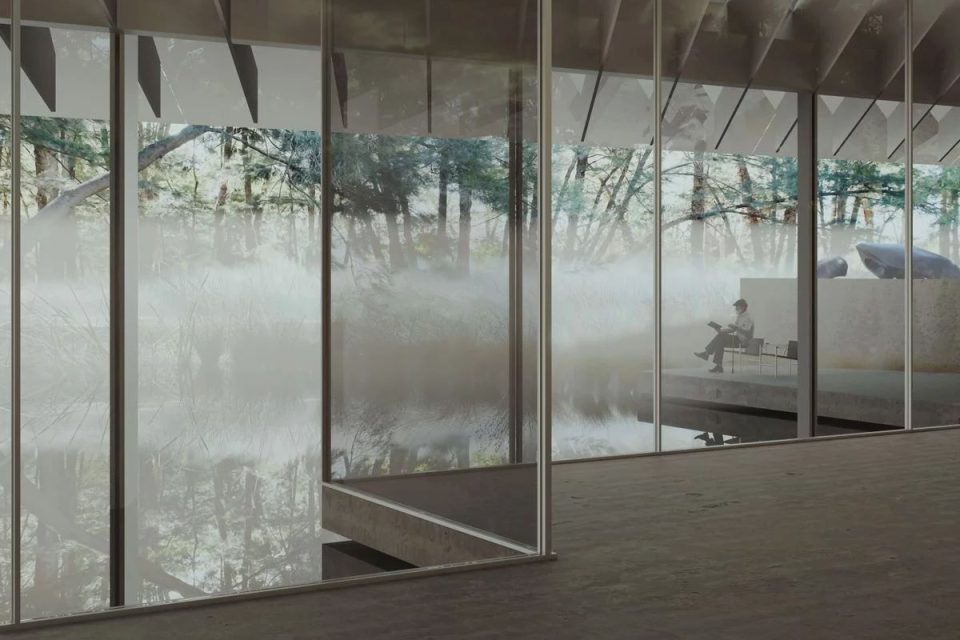

NGA Director Dr Nick Mitzevich said CO-AP Holdings won the competition with a thoughtful approach that showed a sensitivity and respect for the garden’s history and heritage and a plan for renewing, reconnecting and revitalising existing gardens and infrastructure.
“‘The jury was struck by the devotion and care CO-AP Holdings had for the National Sculpture Garden,” he said.
“CO-AP Holdings understood the significance and gravitas of the existing garden and its legacy, but also the importance of bringing the garden into the 21st century.
“We are excited by their vision to renew and reconnect the gallery with the garden and more than double the amount of space for works of art. We want our visitors to feel they are in a landscape that is enveloped in art and architecture.
“We are very much at the beginning of the journey and we look forward to working with the team to develop a final design and future vision for the garden.”
The winning team includes architect Will Fung (CO-AP), landscape architect Johnny Ellice-Flint (Studio JEF), horticulturalist Robert Champion (TARN), architect Phillip Arnold (Plus Minus Design), First Nations consultant Bradley Mapiva Brown (Bagariin Ngunnawal Cultural Consulting), artist Leila Jeffreys, structural engineer PMI Engineers, lighting designer Arup, wayfinding consultant Studio Ongarato, heritage consultant CAB Consulting, art consultant Felicity Fenner and quantity surveyor Heymann Consulting.
Mr Fung said the team was incredibly excited to be selected.
“We decided to enter the competition because we shared a deep love for the Sculpture Garden originally designed by Harry Howard, Barbara Buchanan & Roger Vidler,” he said.
“It is the most important modernist landscape in Australia and provides a beautiful counterpoint to Colin Madigan’s magnificent gallery building. We feel that this is a sustainable and respectful design decision.
“We are very much looking forward to exploring, developing and implementing our ideas for the National Sculpture Garden with the National Gallery of Australia.”
The NGA will now begin working with CO-AP Holdings and key stakeholders to develop a design for the garden over 2025.
Original Article published by Ian Bushnell on Riotact.


